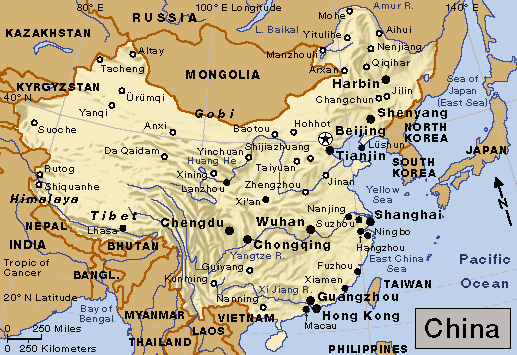Guangdong Province is a province in the southeastern part of China. Its name is sometimes spelled Kwangtung. The province has an area of 76,100 square miles (197,100 square kilometers). Guangzhou, one of the largest cities in southern China, is Guangdong’s capital. It lies at the head of the Zhu Jiang (Pearl River) Delta. Other important cities include Shantou, Shenzhen, Zhanjiang, and Zhuhai. Southern Guangdong has a long coastline on the South China Sea. A number of small islands off the coast are part of the province. Hong Kong is just to the south of Guangdong.

Guangdong lies in the Southern Uplands, a region of hills and mountains in southern China. The province has rich soils and a tropical and subtropical climate. Rice is the main crop. Other agricultural products include livestock, sugar cane, sweet potatoes, and wheat. Fishing is important in coastal areas. The province also produces silk.
The land that is now Guangdong became part of the Chinese Empire in the 200’s B.C. The city of Guangzhou was founded around 214 B.C. by Shi Huangdi, leader of the first united Chinese empire. Roman merchants came to Guangzhou for silks, spices, and tea. Arab and Persian traders visited the city in the A.D. 600’s. By the early 1800’s, British, Dutch, French, and Portuguese traders controlled much of Guangzhou’s international trade.
Sun Yat-sen, a Chinese revolutionary leader of the early 1900’s, was born in Guangdong Province. His ideas became the guiding principles of the Chinese republic, established in 1912. Japan occupied important areas in Guangdong from 1938 until the end of World War II in 1945.
See also Shenzhen.
